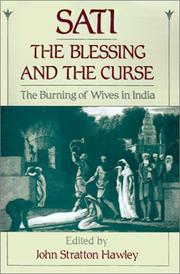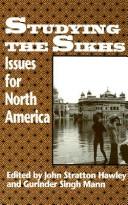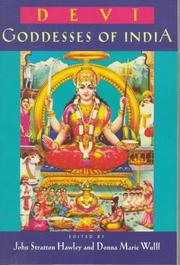| Listing 1 - 8 of 8 |
Sort by
|
Book
ISBN: 0190451955 1282235311 9786612235313 019970600X 9780199706006 9780195373981 0195373987 9780195373998 0195373995 9780190451950 9781282235311 6612235314 Year: 2009 Publisher: Oxford ; New York : Oxford University Press,
Abstract | Keywords | Export | Availability | Bookmark
 Loading...
Loading...Choose an application
- Reference Manager
- EndNote
- RefWorks (Direct export to RefWorks)
Surdas is unarguably the best known poet in Vrajbhasha, the most widely understood of the medieval Hindi literary dialects. In this volume, Jack Hawley offers a selection of his charming translations of the most appealing of these poems.
Krishna --- Christna --- Gopal --- Kr̥ṣṇa --- Govinda --- Mohan --- Gopala --- Bal Gopal --- Krishna (Hindu deity) --- Krishna - (Hindu deity) - Poetry --- Krishna - (Hindu deity)
Book
ISBN: 0674425286 067442526X 9780674425262 9780674187467 0674187466 Year: 2015 Publisher: Cambridge, MA : Harvard University Press,
Abstract | Keywords | Export | Availability | Bookmark
 Loading...
Loading...Choose an application
- Reference Manager
- EndNote
- RefWorks (Direct export to RefWorks)
A widely-accepted explanation for India’s national unity is a narrative called the bhakti movement—poet-saints singing bhakti from India’s southern tip to the Himalayas between 600 and 1600. John Hawley shows that this narrative, with its political overtones, was created by the early-twentieth-century circle around Rabindranath Tagore in Bengal.
Bhakti --- Bhakti-marga --- God (Hinduism) --- Social aspects --- History. --- Worship and love --- Bhakti - Social aspects - History.

ISBN: 0520249135 9780520249134 9780520249141 0520249143 1282358634 9786612358630 0520940075 9780520940079 1433700042 9781433700040 9781282358638 6612358637 Year: 2006 Publisher: Berkeley, CA : University of California Press,
Abstract | Keywords | Export | Availability | Bookmark
 Loading...
Loading...Choose an application
- Reference Manager
- EndNote
- RefWorks (Direct export to RefWorks)
The Life of Hinduism brings together a series of essays-many recognized as classics in the field-that present Hinduism as a vibrant, truly "lived" religion. Celebrating the diversity for which Hinduism is known, this volume begins its journey in the "new India" of Bangalore, India's Silicon Valley, where global connections and local traditions rub shoulders daily. Readers are then offered a glimpse into the multifaceted world of Hindu worship, life-cycle rites, festivals, performances, gurus, and castes. The book's final sections deal with the Hinduism that is emerging in diasporic North America and with issues of identity that face Hindus in India and around the world: militancy versus tolerance and the struggle between owning one's own religion and sharing it with others. Contributors: Andrew Abbott, Michael Burawoy, Patricia Hill Collins, Barbara Ehrenreich, Evelyn Nakano Glenn, Sharon Hays, Douglas Massey, Joya Misra, Orlando Patterson, Frances Fox Piven, Lynn Smith-Lovin, Judith Stacey, Arthur Stinchcombe, Alain Touraine, Immanuel Wallerstein, William Julius Wilson, Robert Zussman
Hinduism - Customs and practices. --- Hinduism - Social aspects. --- Religious life - Hinduism. --- Religious life --- Hinduism --- Religion --- Philosophy & Religion --- Customs and practices --- Social aspects --- Customs and practices. --- Social aspects. --- Hinduism. --- Religious life (Hinduism) --- Religions --- Brahmanism --- asia scholars. --- bangalore. --- caste system. --- comparative religion. --- diasporic communities. --- diversity. --- essay collection. --- global religions. --- globalism. --- gurus. --- hindu festivals. --- hindu worship. --- hinduism. --- hindus. --- india. --- indian history. --- indian society. --- life cycles. --- local traditions. --- nonfiction essays. --- religion and culture. --- religious historians. --- religious history. --- religious rites. --- religious scholars. --- religious studies. --- religious traditions. --- theology.
Book
ISBN: 0691639590 0691014191 1400859123 0691064709 1306987016 9781306987011 9781400859122 9780691639598 9780691014197 Year: 2014 Publisher: Princeton, NJ : Princeton University Press,
Abstract | Keywords | Export | Availability | Bookmark
 Loading...
Loading...Choose an application
- Reference Manager
- EndNote
- RefWorks (Direct export to RefWorks)
Every year thousands of pilgrims travel to Brindavan, the village where Krishna is said to have lived as a child. There, they witness a series of religious dramas called ras lilas, whose central roles are performed by children. By translating four plays that collectively span this cycle, John Hawley provides a lively perspective on the mythology of Krishna as Hindus experience it today.Originally published in 1981.The Princeton Legacy Library uses the latest print-on-demand technology to again make available previously out-of-print books from the distinguished backlist of Princeton University Press. These editions preserve the original texts of these important books while presenting them in durable paperback and hardcover editions. The goal of the Princeton Legacy Library is to vastly increase access to the rich scholarly heritage found in the thousands of books published by Princeton University Press since its founding in 1905.
Folk drama, Braj --- Krishna (Hindu deity) --- Drama. --- Translations into English. --- Braj folk drama --- Braj drama --- Krishna --- Christna --- Gopal --- Kr̥ṣṇa --- Govinda --- Mohan --- Gopala --- Bal Gopal --- Translations into English

ISBN: 1280442603 0199729301 0195360222 1423737032 9781423737032 9780195360226 9780195077742 0195077741 9781280442605 9786610442607 6610442606 0195077717 0195077741 9780195077711 019774107X Year: 2023 Publisher: Oxford : Oxford University Press,
Abstract | Keywords | Export | Availability | Bookmark
 Loading...
Loading...Choose an application
- Reference Manager
- EndNote
- RefWorks (Direct export to RefWorks)
Several years ago in Rajasthan, an 18-year-old woman was burned on her husband's funeral pyre & thus became sati. Before ascending the pyre, she was expected to deliver both blessings & curses: blessings to guard her family & clan for many generations, & curses to prevent anyone from thwarting her desire to die. Sati also means blessing & curse in a broader sense. To those who revere it, sati symbolizes ultimate loyalty & self-sacrifice. It often figures near the core of a Hindu identity that feels embattled in a modern world. Yet to those who deplore it, sati is a curse, a violation of every woman's womanhood. It is murder mystified, & as such, the symbol of precisely what Hinduism should not be. In this volume a group of leading scholars consider the many meanings of sati: in India & the West; in literature, art, & opera; in religion, psychology, economics, & politics.
Sati. --- Suttee --- Voluntary human sacrifice --- Widow suicide --- Widow suicide. --- Widows --- Suicide

ISBN: 0585059233 9780585059235 0791414256 0791414264 1438406193 Year: 1993 Publisher: Albany, N.Y. : State University of New York Press,
Abstract | Keywords | Export | Availability | Bookmark
 Loading...
Loading...Choose an application
- Reference Manager
- EndNote
- RefWorks (Direct export to RefWorks)
Sikhism --- Sikhs --- Religions --- Study and teaching (Higher) --- Religion --- North America.

ISBN: 0520916298 0585105960 9780520916296 9780585105963 0520200578 0520200586 9780520200579 9780520200586 Year: 1996 Publisher: Berkeley, California : University of California Press,
Abstract | Keywords | Export | Availability | Bookmark
 Loading...
Loading...Choose an application
- Reference Manager
- EndNote
- RefWorks (Direct export to RefWorks)
The monotheistic religions of Judaism, Christianity, and Islam have severely limited the portrayal of the divine as feminine. But in Hinduism "God" very often means "Goddess." This extraordinary collection explores twelve different Hindu goddesses, all of whom are in some way related to Devi, the Great Goddess. They range from the liquid goddess-energy of the River Ganges to the possessing, entrancing heat of Bhagavati and Seranvali. They are local, like Vindhyavasini, and global, like Kali; ancient, like Saranyu, and modern, like "Mother India." The collection combines analysis of texts with intensive fieldwork, allowing the reader to see how goddesses are worshiped in everyday life. In these compelling essays, the divine feminine in Hinduism is revealed as never before--fascinating, contradictory, powerful.
Book
ISBN: 9780295745510 0295745517 9780295745503 0295745509 0295745525 Year: 2019 Publisher: Seattle : University of Washington Press,
Abstract | Keywords | Export | Availability | Bookmark
 Loading...
Loading...Choose an application
- Reference Manager
- EndNote
- RefWorks (Direct export to RefWorks)
Bhakti, a term ubiquitous in the religious life of South Asia, has meanings that shift dramatically according to context and sentiment. Sometimes translated as "personal devotion,"bhakti nonetheless implies and fosters public interaction. It is often associated with the marginalized voices of women and lower castes, yet it has also played a role in perpetuating injustice. Barriers have been torn down in the name of bhakti, while others have been built simultaneously.Bhakti and Power provides an accessible entry into key debates around issues such as these, presenting voices and vignettes from the sixth century to the present and from many parts of India's cultural landscape. Written by a wide range of engaged scholars, this volume showcases one of the most influential concepts in Indian history-still a major force in the present day.
Bhakti in literature. --- Bhakti. --- RELIGION / General. --- Religion and politics --- Religion and politics. --- India. --- Bhakti --- Bhakti in literature --- Bhakti-marga --- God (Hinduism) --- Worship and love
| Listing 1 - 8 of 8 |
Sort by
|

 Search
Search Feedback
Feedback About UniCat
About UniCat  Help
Help News
News